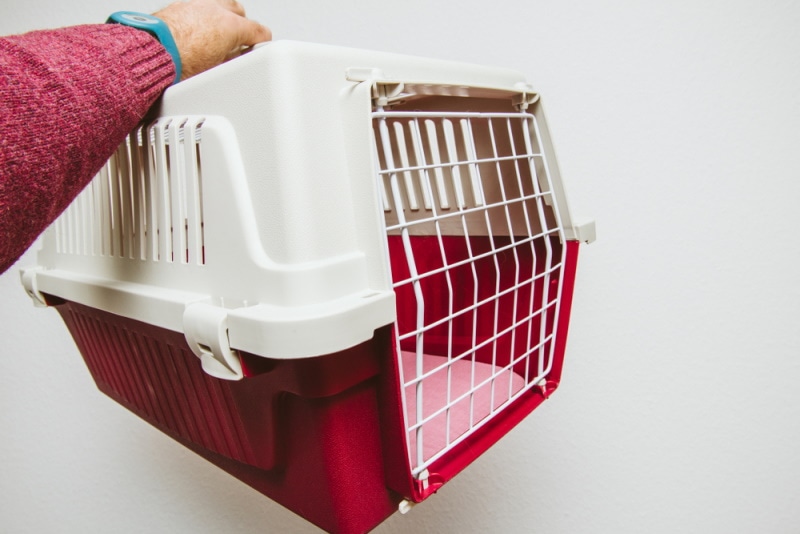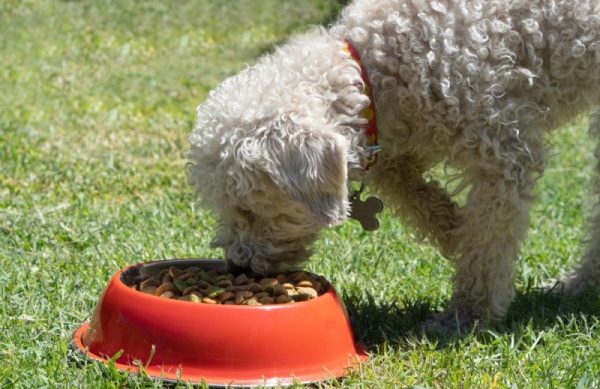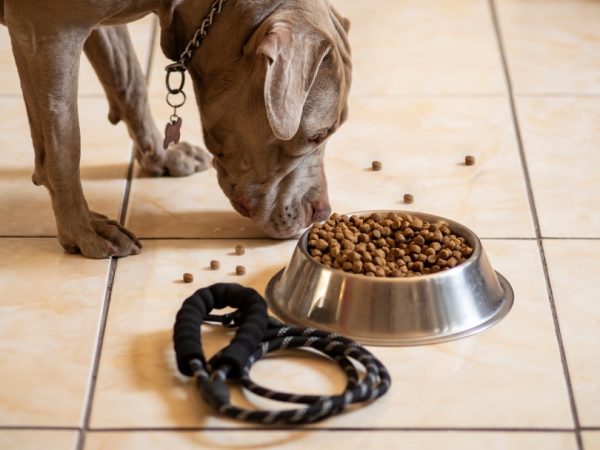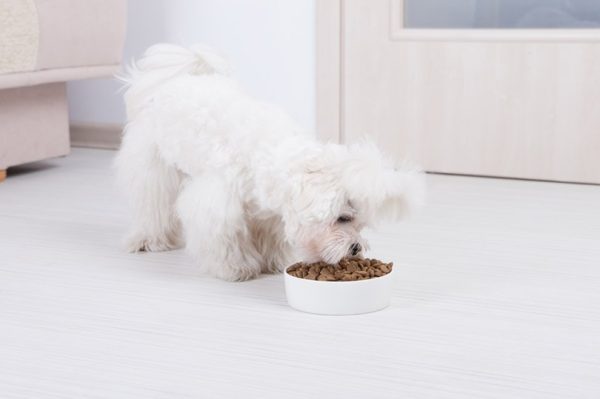In this article
If you’re considering adding a French Bulldog to your family, congratulations! These lovable dogs are known for being friendly, intelligent, and easy to train. But training a Frenchie can be tricky if you don’t know where to start. That’s why we’ve put together this step-by-step guide on how to train a French Bulldog.
We’ll cover everything from housebreaking and obedience training to dealing with common behavior problems. So, whether you’re a first-time dog owner or just looking for some tips on how to train your Frenchie, read on for our best advice!

Housebreaking
Like all dogs, Frenchies need to learn where it’s appropriate to go to the bathroom. The best way to do this is with a consistent routine and plenty of patience. Start by taking your dog out first thing in the morning and after every meal or nap.
If they have an accident inside, simply clean it up without making a big deal. With time and consistency, your Frenchie will learn that the only place to go potty is outside!
1. Choose a Designated Potty Area
The first step in housebreaking your Frenchie is to choose a designated potty area. This can be in your backyard, at a nearby park, or even on a leash around your neighborhood. It’s important to choose an area that’s quiet and free from distractions so that your dog can focus on doing his business.
2. Take Your Dog Out Regularly
Once you’ve chosen a potty area, it’s time to start taking your dog out regularly. The best way to do this is to create a schedule and stick to it as much as possible. For example, you might take your dog out first thing in the morning, after every meal or nap, and before bedtime.

3. Be Consistent
The key to successful housebreaking is consistency. This means taking your dog out at the same times each day and not deviating from your schedule. It’s also important to be patient and never punish your dog for accidents. With time and patience, your French Bulldog will learn where it’s appropriate to go potty!

Crate Training
Crate training is another important step in training your French Bulldog. A crate can provide a safe, comfortable space for your dog to sleep or take a break from playtime. It can also be a useful tool for housebreaking and preventing destructive behaviors. When used correctly, crates are an invaluable part of raising a happy and well-behaved pup!
1. Choose the Right Crate
The first step in crate training is to choose the right crate for your dog. There are a variety of crates available on the market, so it’s important to choose one that’s comfortable and spacious enough for your Frenchie. It’s also important to make sure that the crate is made from durable materials that can’t be easily chewed or scratched.
2. Introduce Your Dog to the Crate
Once you’ve chosen a crate, it’s time to introduce your dog to it. Start by placing the crate in a room where your dog spends a lot of time, such as the living room or kitchen. Then, put some of your dog’s favorite toys or treats inside and encourage them to go inside.
It’s important to make the crate a positive experience for your dog by offering rewards and praise.

3. Crate Your Dog for Short Periods of Time
Once your dog is comfortable going into the crate, you can start crating them for short periods of time. Start with just a few minutes at a time and gradually increase the length of time as your dog gets used to it. It’s important to never leave your dog in the crate for more than a few hours at a time, as this can lead to boredom or anxiety.
Crate training takes time and patience, but it’s an important part of raising a well-behaved French Bulldog.

Obedience
Next, you’ll want to start obedience training with your French Bulldog. This will teach them basic commands like “sit,” “stay” and “come.” It’s important to begin obedience training early, as it will make the rest of your life together much easier.
Plus, it’s a great way to bond with your dog! There are a few different ways you can go about obedience training, but we recommend enrolling in a class or hiring a private trainer. This way, you’ll have an expert on hand to help you troubleshoot any problems that come up.

Top 4 Tips to Train a French Bulldog
1. Use Positive Reinforcement
As with any dog, the best way to train a French Bulldog is with positive reinforcement. That means rewarding your dog for good behavior instead of punishing them for bad behavior. The most common way to do this is with treats, but you can also use praise, petting, or even toys as rewards.
When training your Frenchie, be sure to give them a reward immediately after he performs the desired behavior. This will help them understand what they’re being rewarded for and make it more likely that they’ll repeat the behavior in the future.
2. Choose a Rewarding Treat
When choosing a treat to use as a reward, it’s important to pick something that your dog really loves. French Bulldogs are notoriously food-motivated, so most will be happy with just about any type of treat. However, if your dog is particularly finicky, you may want to try a few different types of treats until you find one that it really goes for.
Once you’ve found the perfect treat, cut it into small pieces so that you can easily give your dog several rewards during a training session.

3. Start with Simple Commands
When first starting out, it’s best to begin with simple commands that your dog can easily understand and learn. Some good examples include “sit,” “stay” and “come.” Once your dog has mastered these basic commands, you can start teaching them more advanced tricks.
4. Put It All Together
Now that you’ve chosen a reward and learned some basic commands, it’s time to start training your French Bulldog! The key to success is to be consistent with your commands and rewards. If you’re inconsistent, your dog will get confused and won’t learn as quickly.
- Start by practicing each command for a few minutes at a time, several times per day.
- As your dog starts to understand what you’re asking of them, you can increase the difficulty of the tasks and decrease the frequency of rewards.
With patience and practice, you’ll soon have a well-trained French Bulldog!

A Word About Treats
One important thing to keep in mind when using treats as rewards is not to overdo it. You don’t want your Frenchie to get overweight, so be sure to limit their treat intake and make up for it with extra exercise.
A good rule of thumb is to give your dog a treat only when he performs a behavior that you want them to learn. Once they’ve mastered the behavior, you can phase out the treats and just use praise or petting as rewards.


How to Train a Dog Without Rewards
If you prefer not to use rewards when training your Frenchie, that’s okay too. There are plenty of other ways to train your dog without resorting to treats or toys. One popular method is clicker training, which uses a small hand-held device that makes a clicking sound to mark desired behaviors.
When used correctly, the clicker becomes a conditioned reinforcer, which means it tells your dog that they’re doing something right and encourages them to keep doing it. You still need to provide reinforcement for each click, so use words of praise and cuddles, mixed with the occasional treat, to keep the clicker’s value!
Clicker Training
Clicker training takes some time and patience to learn, but it can be a great way to bond with your French Bulldog while teaching them new tricks. If you’re interested in learning more about clicker training, we recommend checking out some of the many great resources available online.
- Get a Clicker – The first step in clicker training is to get a clicker.
- Charge the Clicker – Once you have your clicker, it’s time to “charge” it. This simply means getting your dog used to the sound of the clicker so that they associate it with something positive. To do this, simply click the device and then immediately give your dog a treat. Repeat this several times until your dog starts to associate the clicking sound with getting a tasty reward.
- Start Training – Now that your clicker is charged, you’re ready to start training! Begin by teaching your dog simple commands like “sit” or “stay.” As it masters each command, you can move on to more advanced tricks.
Remember to be patient and consistent with your commands, and always end each session on a positive note. With a little practice, you’ll be an expert at clicker training in no time!

Conclusion
Training your French Bulldog doesn’t have to be difficult—with a little time, patience, and consistency, you’ll be able to get them behaving the way you want in no time. If you are having trouble training your Frenchie or teaching them tricks, consider hiring a professional trainer or enrolling in a class.
With an expert’s help, you can master the basics of obedience training and behavior correction.
Featured Image Credit By: Jochen_Schaft, Pixabay




















